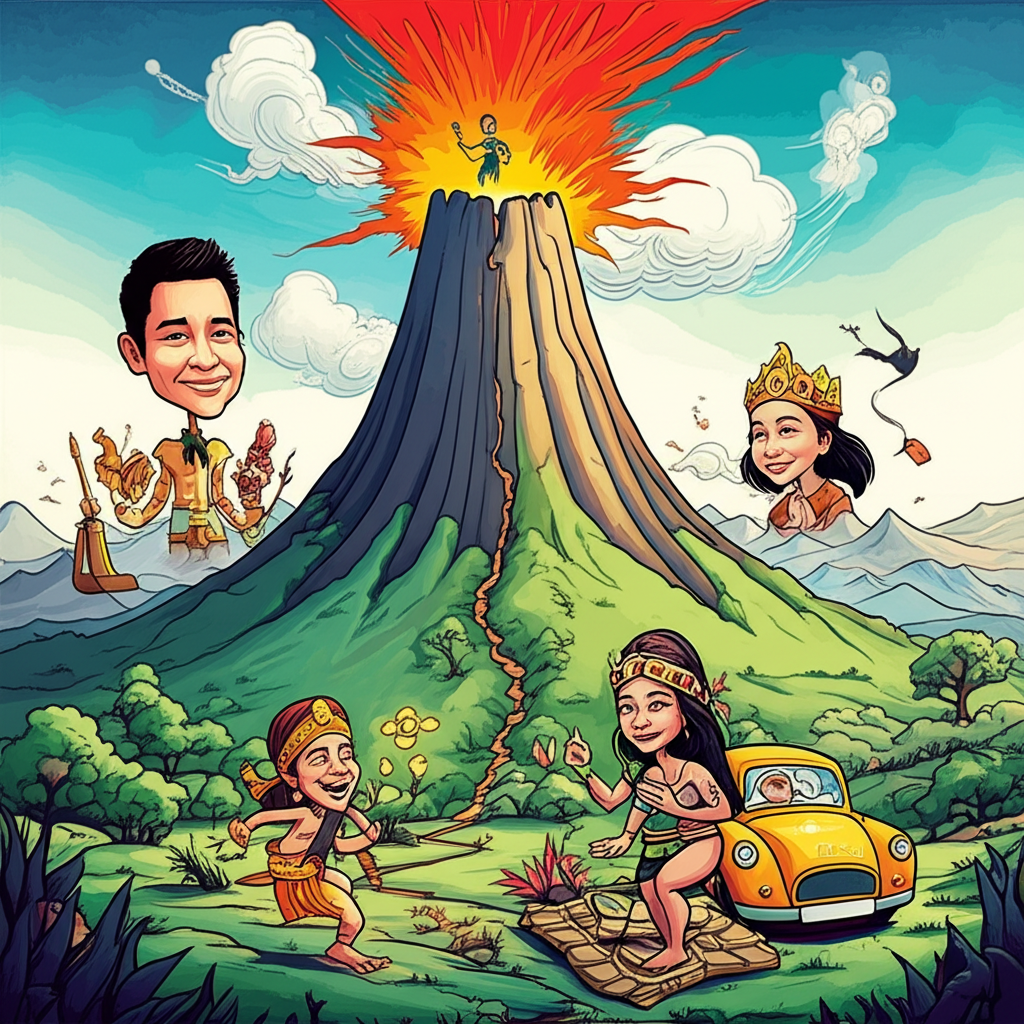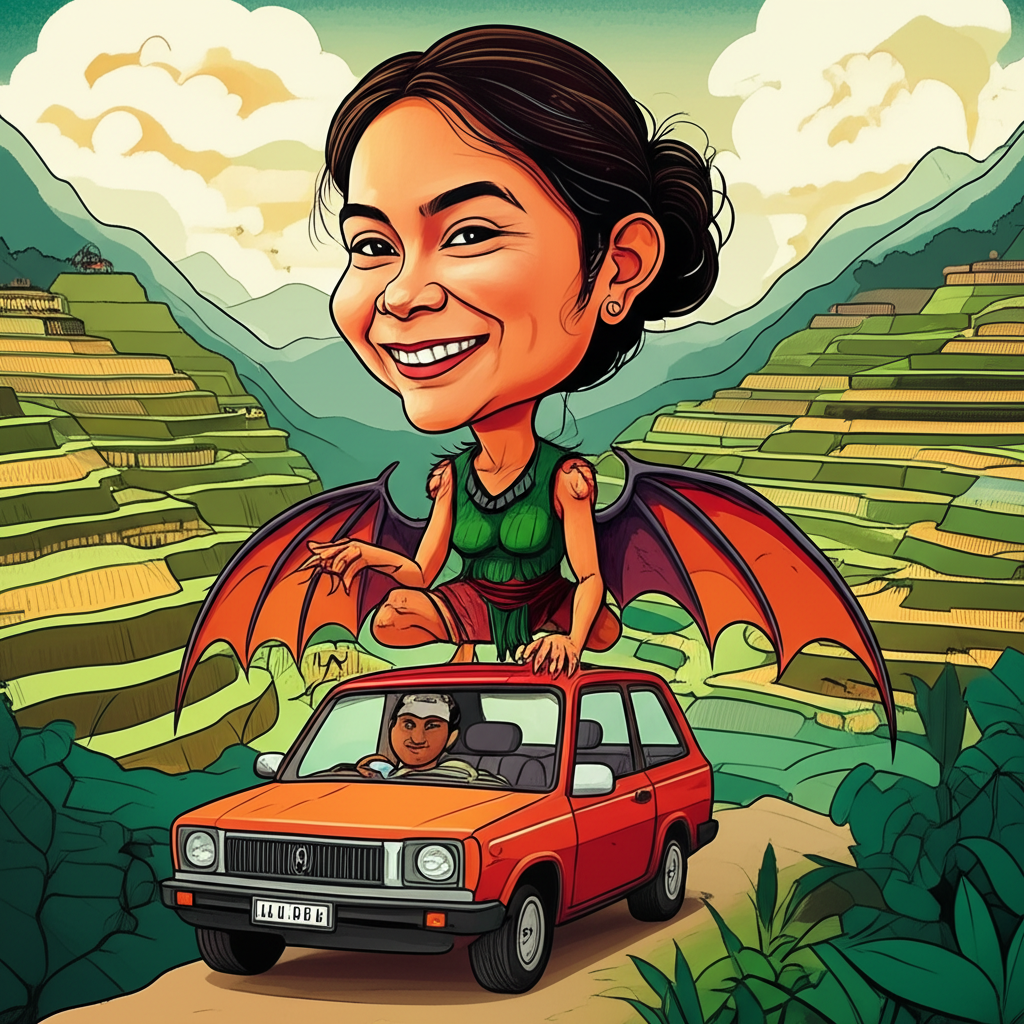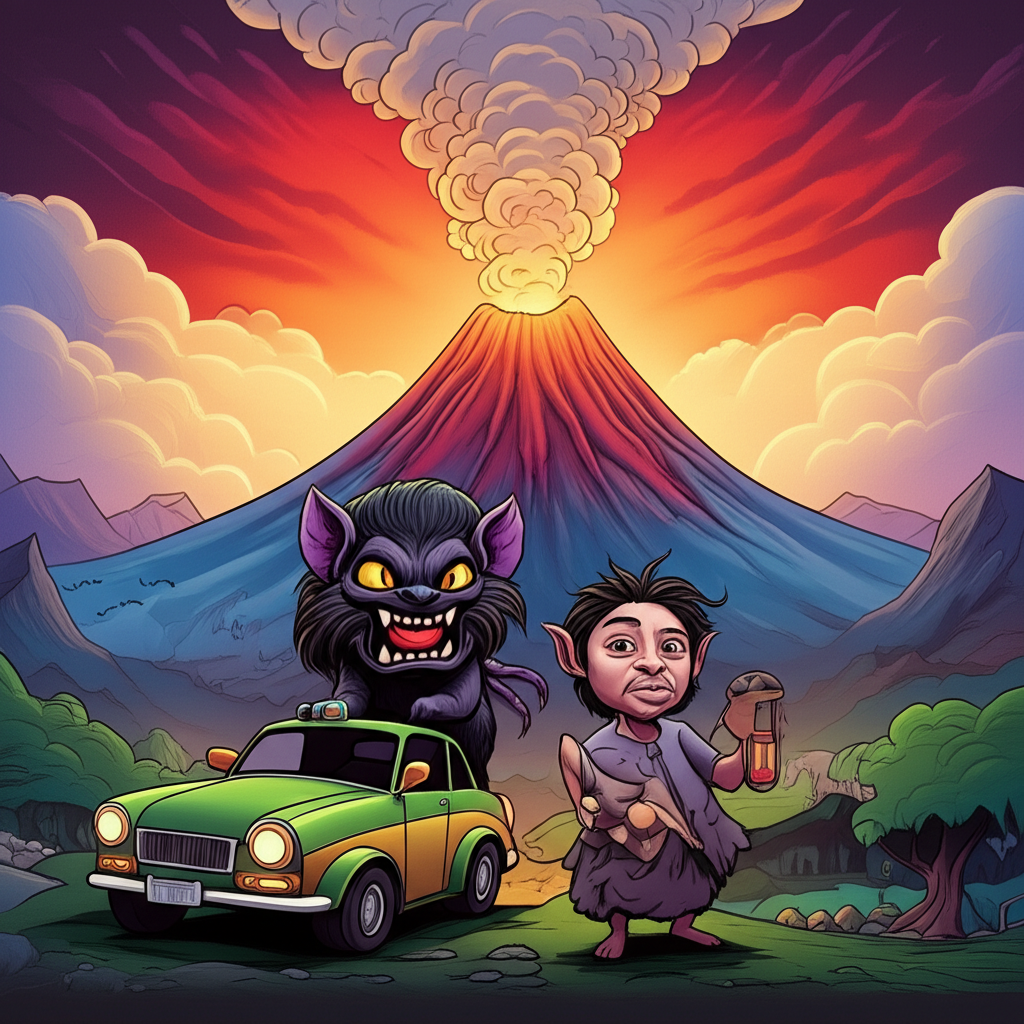
Introduction:
This tale originates from the rich tapestry of Tagalog folklore, woven through generations of Filipinos in the pre-colonial era. It is a story, a narrative passed down through oral tradition, meant to entertain, explain the natural world, and impart lessons about life. This is not a recounting of historical events or a claim to divine truth, but rather a window into the imaginative world of our ancestors, a world shaped by their environment and their understanding of the cosmos. It is a traditional story told by the ancient people of the Tagalog region, offering a glimpse into their beliefs and values.
Origins and Cultural Background:
The story unfolds in a time long before the arrival of the Spanish, a time when the Tagalog people lived in scattered barangays, small communities governed by Datus and elders. Their lives were intimately connected to the land, the sea, and the sky. They were primarily farmers, fishermen, and traders, their livelihoods dependent on the cycles of nature. Their world was populated by both the seen and the unseen, a vibrant realm where spirits, deities, and mythical creatures interacted with humans. The environment, particularly the towering mountains, verdant forests, and flowing rivers, held a sacred significance. They believed that these natural features were inhabited by powerful spirits and guardians, their moods influencing the fortunes of the people. Sickness, natural disasters, and the bounty of the harvest were all attributed to the benevolence or displeasure of these unseen entities. Storytelling was a vital part of life, serving to preserve history, pass down knowledge, and provide moral guidance. Myths and legends were not just entertainment; they were the very fabric of their understanding of the world.
Character / Creature Description:
At the heart of this tale lies Maria Makiling, a diwata, a nature spirit or nymph, associated with Mount Makiling, a majestic mountain that dominates the landscape. The people of the Tagalog region saw her as the embodiment of the mountain itself – its beauty, its mystery, and its power. Maria Makiling was often depicted as a woman of unparalleled beauty, her skin the color of polished wood, her hair like flowing black rivers. She was said to possess an enchanting voice and an alluring presence. She was often associated with the bountiful gifts of the forest: the ripening fruits, the healing herbs, and the clear, cold water that flowed from the mountain’s springs. However, she was not merely a benevolent spirit. She could also be capricious, her moods mirroring the unpredictable nature of the mountain. She could punish those who disrespected the forest or violated its sanctity, and she could test the hearts of those who sought her favor. Symbolically, Maria Makiling represented the fertile earth, the power of nature, and the importance of respecting the environment. She was a reminder of the interconnectedness of all things and the potential consequences of disrupting the natural balance.
Main Story / Narrative Retelling:
The tale begins not with Maria Makiling’s usual serenity, but with a cataclysm. Long ago, before the rice fields shimmered emerald green and the fishermen cast their nets into the calm waters of Laguna de Bay, Mount Makiling was a volcano, a fiery giant that slumbered restlessly. Its anger, held in check for generations, finally erupted with a fury that shook the very foundations of the world. Smoke billowed into the sky, blotting out the sun. Molten lava cascaded down the slopes, consuming everything in its path. The earth trembled, and the air filled with the acrid stench of sulfur.
When the mountain finally calmed, the devastation was immense. The once-lush forests were scorched and scarred. Rivers had changed course, and the landscape was forever altered. The people, terrified and displaced, huddled in fear, wondering if the world had truly ended.
Maria Makiling, the spirit of the mountain, witnessed the destruction with a heavy heart. Though she was a being of power, she could not prevent the eruption. She could only watch as her beloved home was ravaged. She felt a profound responsibility for the suffering of the people, for the loss of their homes and the disruption of their lives.
As the smoke cleared and the air became breathable once more, Maria Makiling descended from the ravaged peak. She walked among the scattered survivors, her presence a beacon of hope in the desolate landscape. She did not speak, but her mere presence seemed to soothe their fears.
With a sorrowful sigh, Maria Makiling began to rebuild. She used her power to coax life back into the barren land. She called upon the rain to cleanse the scorched earth and the sun to nurture new growth. She summoned the spirits of the wind to carry seeds across the plains.
Slowly, gradually, the land began to heal. New trees sprouted from the ashes. Wildflowers bloomed in vibrant hues. The rivers, though changed, started to flow again, teeming with fish.
Maria Makiling, working tirelessly, ensured the people had food, shelter, and the resources they needed to survive. She showed them how to cultivate the land, how to find the hidden springs, and how to harness the power of the natural world. She taught them to respect the mountain and to live in harmony with its rhythms.
And so, Mount Makiling, though forever marked by the eruption, became a source of life once more. The people learned a valuable lesson: that even in the face of devastation, life could persist, and beauty could be reborn. They learned the importance of resilience, of community, and of respecting the forces of nature. Maria Makiling, the guardian of the mountain, became not only a symbol of beauty and bounty but also a symbol of hope and renewal, a testament to the enduring power of the human spirit. The legend of the aftermath of Mount Makiling became a testament to the cycles of destruction and creation that govern the world.
Symbolism and Meaning:
This story, like many myths, served to explain the world and impart moral lessons. The eruption of Mount Makiling can be interpreted as a metaphor for natural disasters, societal upheaval, or personal trials. Maria Makiling’s role represents the restorative power of nature and the responsibility of humans to heal and rebuild after periods of hardship. The story emphasizes the interconnectedness of all things, the cyclical nature of life, death, and rebirth, and the importance of respecting the environment. It also highlights the values of community, resilience, and compassion. The diwata’s presence symbolizes the benevolent forces that can aid humanity during times of struggle. The story encourages individuals to recognize the destructive forces of nature and to learn the importance of rebuilding after catastrophic events. It serves as a reminder that from chaos, new life can emerge, and the human spirit is strong enough to prevail.
Modern Perspective:
Today, the myth of Maria Makiling and the aftermath of the volcanic eruption continues to resonate in various forms. The story is a staple in Philippine literature, inspiring novels, short stories, and poems. Artists have depicted Maria Makiling in paintings, sculptures, and films, often portraying her as a symbol of the Philippines itself – a land of beauty, resilience, and mystery. The story is integrated into Filipino education systems, teaching children about the country’s rich cultural heritage. Furthermore, the tale is used to promote environmental awareness, reminding people of the importance of protecting Mount Makiling and the natural resources it provides. The legend has also inspired video games, musicals, and theme park attractions, each offering a unique interpretation of the story. The enduring popularity of Maria Makiling highlights the continuing relevance of the story in the Filipino consciousness, even in the modern world.
Conclusion:
This story, originating from the ancient Tagalog people, is not a testament to any divine truth, nor should it be seen as a basis for worship. It is a cultural narrative, a window into the imagination and worldview of a people who lived in harmony with nature. As Muslims, we acknowledge that Allah is the one true Creator and Sustainer, the source of all existence. We recognize the beauty and wonder of the world He has created, and we appreciate the rich cultural heritage of all peoples. The tale of Maria Makiling and the aftermath of the eruption serves as a reminder of the power of storytelling, the importance of cultural preservation, and the enduring human capacity for imagination and wonder. It is a celebration of the past, a reflection on the present, and a testament to the power of stories to connect us across time and cultures.





